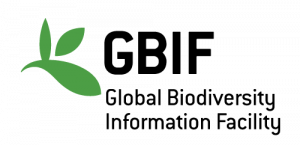The Sustainable Energy Fund for Africa (SEFA) provides catalytic finance to unlock private-sector investments in renewable energy. SEFA offers technical assistance and concessional finance instruments. Funding requests must be aligned with three strategic priorities: (1) Green Baseload; (2) Green Mini-Grids; and (3) Energy Efficiency. Technical assistance grants are available to public and private sector entities. Applications can be submitted anytime. Sustainable Energy Fund for Africa
The Sustainable Energy Fund for Africa (SEFA) is a multi-donor Special Fund managed by the African Development Bank. It provides catalytic finance to unlock private sector investments in renewable energy and energy efficiency. SEFA offers technical assistance and concessional finance instruments to remove market barriers, build a more robust pipeline of projects and improve the risk-return profile of individual investments. The Fund’s overarching goal is to contribute to universal access to affordable, reliable, sustainable, and modern energy services for all in Africa, in line with the New Deal on Energy for Africa and Sustainable Development Goal 7.
Established in 2011 in partnership with the government of Denmark, SEFA has since received contributions from the governments of the United States, United Kingdom, Italy, Norway, Spain, Sweden, and Germany, and also from the Nordic Development Fund and the Global Energy Alliance from the People and Planet.
SEFA is housed in the Renewable Energy and Energy Efficiency Department (PERN) under the Power, Energy, Climate, and Green Growth (PEVP) complex.
Notable achievements
SEFA has spearheaded the African Development Bank’s engagement in green mini-grids, through the Market Development Program and country-focused support to create an enabling investment environment. Through these initiatives, SEFA has paved the way for the Bank to finance its first two scale-up green energy programs in the Democratic Republic of Congo and Burkina Faso.
SEFA also develops flagship blended-finance initiatives in the sector. It played a catalytic role in the preparation and financial close of the Africa Renewable Energy Fund (AREF) – one of the first pan-African equity funds in the market. It also played a key role in establishing the Facility for Energy Inclusion (FEI) – a debt financing platform for small-scale renewables across the continent.
Scope
SEFA supports interventions across three strategic priorities:
Green baseload: Increasing the penetration of renewable energy in power systems, with a strong focus on power system stability, and delivering alternatives to fossil-fuel baseload generation options.
Green mini-grids: Accelerating electricity access to underserved populations through clean energy mini-grid solutions.
Energy efficiency: Improving the efficiency of energy services delivered through a variety of technologies and business models, also including clean cooking and pico-solar technologies.
Instruments
Technical assistance: Support through grants with a strong focus on activities that will directly unlock investments. Technical assistance grants are available to public and private sector entities.
Concessional investment: Support through results-based financing, loans, and equity instruments, often blended with African Development Bank investments to close viability gaps.
We want to inform all potential applicants that SEFA is currently at full capacity and unable to accept any new project applications. Our team is fully engaged with ongoing projects and is committed to ensuring the highest standards of quality and impact in our existing pipeline/portfolio. We appreciate your interest and encourage you to visit our website for future updates regarding when we will be able to accept new project applications again. Thank you for your understanding and support.”
About Sustainable Energy
Contents
Sustainable energy refers to energy derived from resources that are naturally replenishing, environmentally benign, and capable of meeting present needs without compromising future generations’ ability to meet theirs. Unlike fossil fuels, which are finite and emit greenhouse gases, sustainable energy sources aim to minimize ecological harm while providing reliable power. Below is a detailed exploration of sustainable energy, covering its sources, technologies, benefits, challenges, and global impact.
1. Sources of Sustainable Energy
Sustainable energy primarily comes from renewable resources, each harnessing natural processes. The main sources include:
- Solar Energy: Captured from sunlight using photovoltaic (PV) panels or concentrated solar power (CSP) systems. Solar is abundant—Earth receives about 174 petawatts of solar radiation annually—and versatile, powering homes, businesses, and even vehicles. PV panels convert sunlight directly into electricity, while CSP uses mirrors to focus sunlight to generate heat for power production.
- Wind Energy: Generated by wind turbines that convert kinetic energy from moving air into electricity. Onshore and offshore wind farms are increasingly common, with offshore turbines benefiting from stronger, more consistent winds. Modern turbines can produce 2-15 megawatts each, enough to power hundreds of homes.
- Hydropower: Derived from the energy of moving water, typically through dams on rivers or run-of-river systems. It’s the most established renewable source, accounting for about 16% of global electricity. Small-scale hydro and pumped storage systems add flexibility to grid management.
- Geothermal Energy: Taps heat from Earth’s core, accessed via wells drilled into hot underground reservoirs. It’s used for electricity generation in geologically active regions (e.g., Iceland, New Zealand) and for direct heating. Geothermal plants have low emissions and high reliability, operating nearly 24/7.
- Biomass Energy: Produced from organic materials like wood, crop residues, or municipal waste. When managed sustainably, biomass is carbon-neutral, as burning releases carbon absorbed during growth. Biofuels like ethanol and biodiesel power vehicles, while biogas from waste supports heating and electricity.
- Ocean Energy: Includes tidal, wave, and ocean thermal energy conversion (OTEC). Tidal energy uses underwater turbines to capture predictable tidal movements, while wave energy harnesses surface motion. OTEC exploits temperature differences between deep and surface seawater. These technologies are less mature but hold significant potential in coastal regions.
2. Technologies and Innovations
Sustainable energy relies on evolving technologies to improve efficiency, storage, and integration:
- Energy Storage: Batteries, particularly lithium-ion, are critical for storing intermittent solar and wind power. Emerging alternatives include flow batteries, solid-state batteries, and gravity-based storage (e.g., lifting heavy blocks to store potential energy). Storage ensures grid stability when renewable output fluctuates.
- Smart Grids: Advanced grid systems use sensors, AI, and automation to balance supply and demand. They integrate renewables efficiently, reduce outages, and enable demand response programs where consumers adjust usage during peak times.
- Energy Efficiency: Technologies like LED lighting, smart thermostats, and high-efficiency appliances reduce energy demand, complementing sustainable supply. Building designs with passive solar heating or green roofs further cut consumption.
- Carbon Capture and Utilization: While not a renewable source, carbon capture paired with biomass energy (BECCS) can create negative emissions, offsetting fossil fuel use during transitions.
- Emerging Tech: Innovations like perovskite solar cells (cheaper, more efficient than silicon), floating wind turbines, and hydrogen production from renewables (green hydrogen) are expanding possibilities. Hydrogen can decarbonize hard-to-electrify sectors like aviation and heavy industry.
3. Benefits of Sustainable Energy
Sustainable energy offers wide-ranging advantages:
- Environmental Impact: Renewables emit little to no greenhouse gases during operation, mitigating climate change. For instance, replacing coal with wind or solar can cut CO2 emissions by up to 90% per kilowatt-hour. They also reduce air pollutants like sulfur dioxide, improving public health.
- Energy Security: By relying on local resources (sun, wind, water), countries reduce dependence on imported fossil fuels, enhancing geopolitical stability.
- Economic Growth: The renewable energy sector creates jobs—over 12 million globally in 2022, per the International Renewable Energy Agency (IRENA). Solar and wind projects drive investment in manufacturing, installation, and maintenance.
- Cost Competitiveness: Solar and wind are now among the cheapest electricity sources in many regions. Since 2010, solar PV costs have dropped over 80%, and onshore wind costs have fallen by about 50%, per IRENA.
- Access to Energy: Off-grid solar systems and microgrids bring electricity to remote areas, improving quality of life in developing nations. Over 700 million people gained energy access between 2010 and 2020, largely through renewables.
4. Challenges and Limitations
Despite its promise, sustainable energy faces hurdles:
- Intermittency: Solar and wind depend on weather and time of day, requiring robust storage and backup systems. Hydropower and geothermal are more consistent but geographically limited.
- Land and Resource Use: Large-scale projects like wind farms or hydropower dams can disrupt ecosystems or displace communities. Solar farms need significant land, though agrivoltaics (pairing solar with farming) mitigates this.
- Infrastructure Transition: Retrofitting grids for renewables and phasing out fossil fuel plants demands massive investment—estimated at $100 trillion globally by 2050 for net-zero goals, per the International Energy Agency (IEA).
- Supply Chain Issues: Rare earth metals (e.g., lithium, cobalt) for batteries and turbines raise concerns about mining’s environmental and ethical impacts. Recycling and alternative materials are being explored.
- Policy and Resistance: Fossil fuel industries and political inertia slow transitions in some regions. Subsidies for coal, oil, and gas still outpace those for renewables globally.
5. Global Impact and Trends
Sustainable energy is reshaping the global energy landscape:
- Adoption Rates: Renewables accounted for 29% of global electricity in 2023, with solar and wind leading growth. The IEA projects renewables could supply 50% of electricity by 2030 if current trends accelerate.
- Policy Push: Agreements like the Paris Accord drive commitments to net-zero emissions. Over 140 countries have renewable energy targets, and carbon pricing schemes (e.g., EU’s Emissions Trading System) incentivize clean energy.
- Corporate Shift: Companies like Google and Apple aim for 100% renewable energy, spurring demand for green power purchase agreements. In 2023, global corporate renewable contracts exceeded 40 gigawatts.
- Developing Nations: Countries like India and Kenya are leapfrogging fossil fuels with solar and wind. India aims for 500 gigawatts of renewable capacity by 2030, while Africa’s off-grid solar market is booming.
- Decarbonization: Sustainable energy is key to decarbonizing transport (electric vehicles), heating (heat pumps), and industry (green hydrogen). Electrification powered by renewables could cut global emissions by 70% by 2050, per IRENA.
6. Future Outlook
The path to a sustainable energy future hinges on scaling up deployment and innovation:
- Investment Needs: The IEA estimates $4 trillion annually through 2030 is needed for clean energy and infrastructure to meet climate goals—triple current levels.
- Technological Breakthroughs: Advances in fusion energy, next-gen batteries, or scalable carbon removal could accelerate transitions. Fusion, though decades away, promises near-limitless clean energy.
- Equity and Justice: Ensuring developing nations access funding and technology is critical. Climate finance mechanisms, like the UN’s Green Climate Fund, aim to bridge gaps.
- Behavioral Shifts: Public adoption of energy-saving habits, electric vehicles, and support for green policies will amplify impact.
Sustainable energy is not just a technological shift but a societal transformation, redefining how we power our world. Its sources—solar, wind, hydro, geothermal, biomass, and ocean—offer diverse, low-impact solutions to meet global demand. While challenges like intermittency and infrastructure costs persist, the benefits—environmental protection, economic growth, and energy access—are profound. With concerted global effort, sustainable energy can pave the way to a resilient, equitable, and carbon-neutral future. If you’d like deeper dives into specific sources or technologies, let me know!




